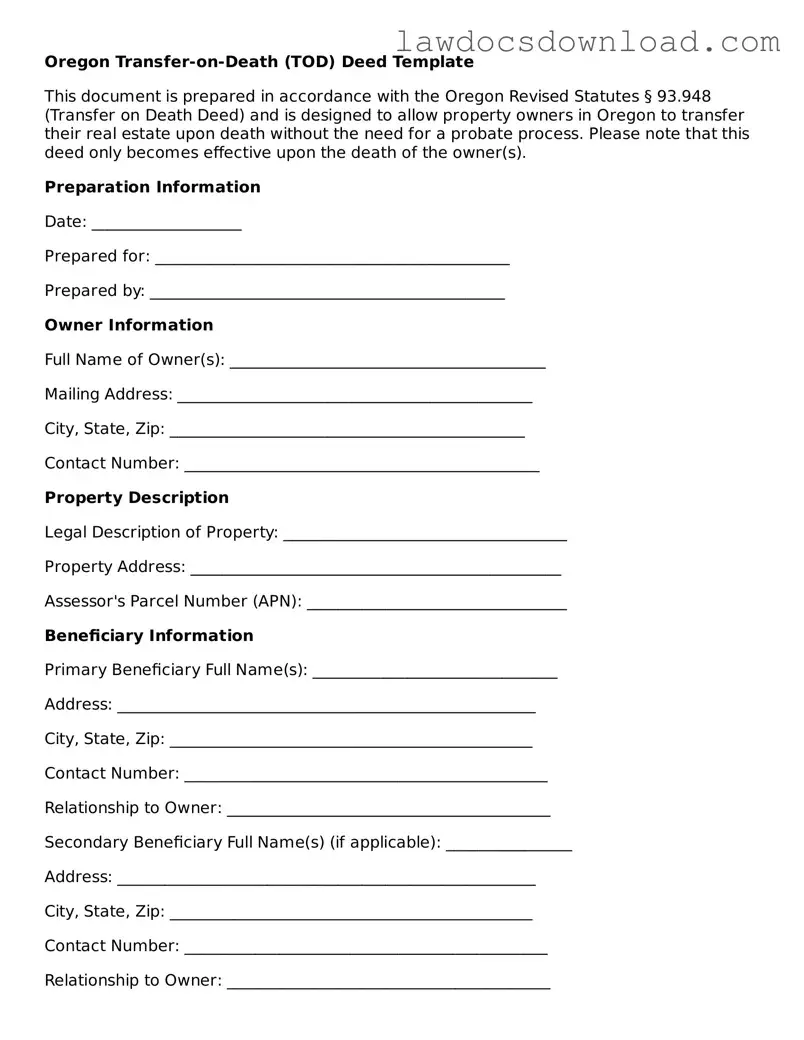Oregon Transfer-on-Death (TOD) Deed Template
This document is prepared in accordance with the Oregon Revised Statutes § 93.948 (Transfer on Death Deed) and is designed to allow property owners in Oregon to transfer their real estate upon death without the need for a probate process. Please note that this deed only becomes effective upon the death of the owner(s).
Preparation Information
Date: ___________________
Prepared for: _____________________________________________
Prepared by: _____________________________________________
Owner Information
Full Name of Owner(s): ________________________________________
Mailing Address: _____________________________________________
City, State, Zip: _____________________________________________
Contact Number: _____________________________________________
Property Description
Legal Description of Property: ____________________________________
Property Address: _______________________________________________
Assessor's Parcel Number (APN): _________________________________
Beneficiary Information
Primary Beneficiary Full Name(s): _______________________________
Address: _____________________________________________________
City, State, Zip: ______________________________________________
Contact Number: ______________________________________________
Relationship to Owner: _________________________________________
Secondary Beneficiary Full Name(s) (if applicable): ________________
Address: _____________________________________________________
City, State, Zip: ______________________________________________
Contact Number: ______________________________________________
Relationship to Owner: _________________________________________
Revocation
This document and the transfer on death deed it creates can be revoked by the owner at any time before the owner's death, as long as the revocation is in compliance with Oregon law. To revoke, a new deed or a formal revocation must be recorded before the death of the owner.
Signature
The undersigned owner(s) hereby declare(s) that the information provided in this document is true and correct to the best of their knowledge and that this TOD deed is executed as of the date written above.
___________________________________________
Signature of Owner
___________________________________________
Print Name of Owner
Notary Public
This document was acknowledged before me on __________________ (date) by _____________________________ (name(s) of signer(s)).
___________________________________________
Signature of Notary Public
Print Name: _________________________________
My commission expires: ________________________
